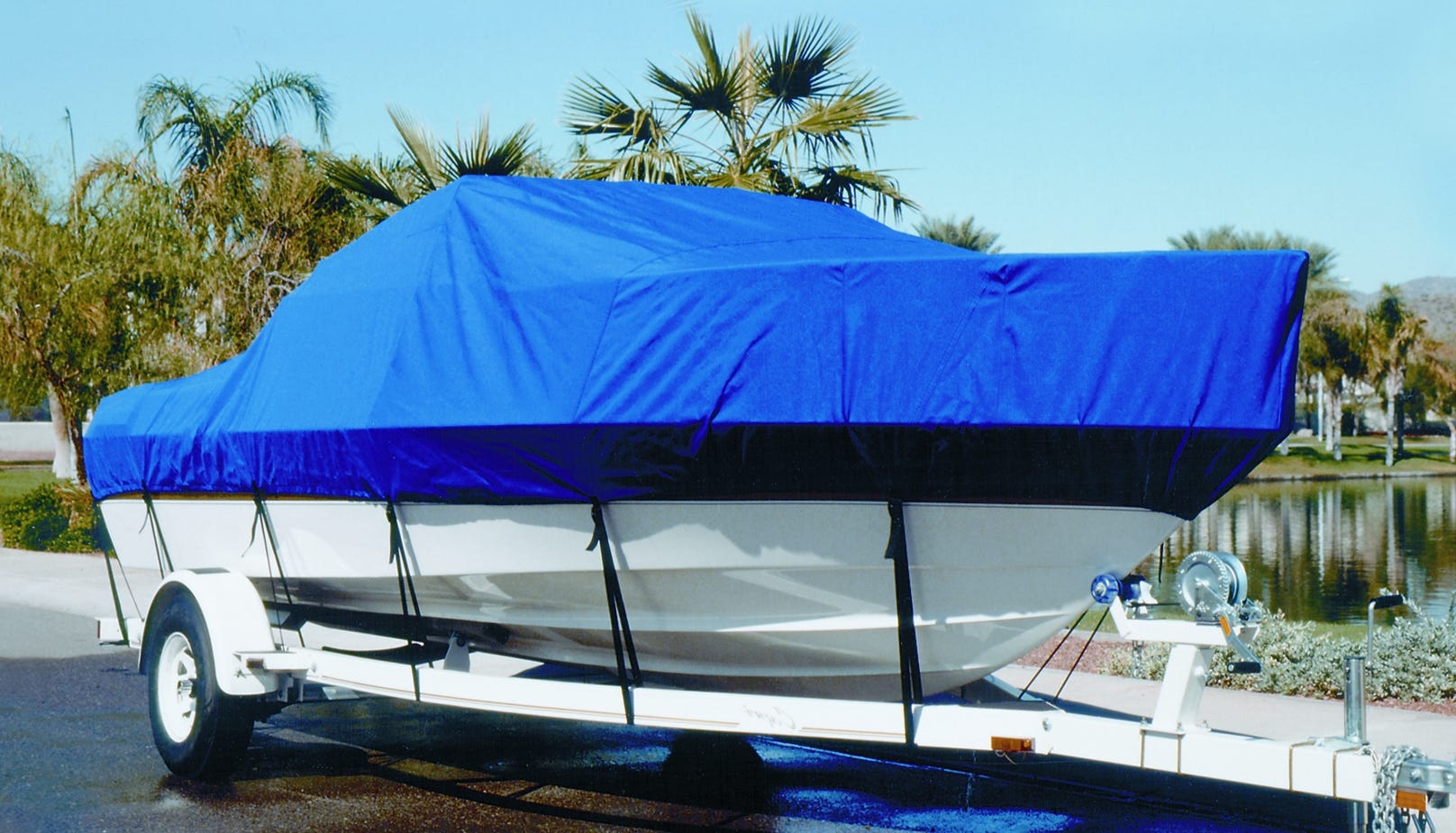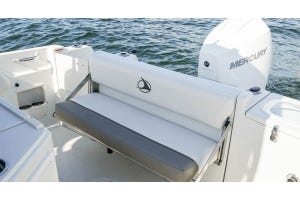
Interior moisture is the enemy of wooden boats, while ultraviolet light destroys fiberglass gelcoat. Even the most rugged marine-grade boat carpeting will mildew and decay without proper care and protection.
A quality, well-fitting boat cover can guard against both moisture and UV radiation. These days, boaters can choose among options like a humble tarp, professional shrink-wrap, a shrink-it-yourself Transhield cover, or a custom or OEM boat cover.
Dry up. Covering a damp boat seals in moisture and guarantees problems with condensation, mildew, and mold. Before covering or shrink-wrapping your boat, make sure its carpet and upholstery are as dry as can be to avoid a yucky surprise when you open it up next season. If it's rained on your uncovered boat recently, vacuum up excess moisture with a shop-vac or carpet cleaner. Use fans or portable heaters to speed drying.
Soft around the edges. A quality OEM or custom boat cover will be reinforced or padded where it lies over the windshield or other edges. No padding? No problem! Cut open a length of foam pipe insulation or a pool noodle and fit it over the windshield's top edge. Use pieces of this foam to pad any other sharp corners. (Thanks to BassBoatCentral members for this tip).
Tie down and prop up. Exact fit is best, but a too-big cover is better than one that's too small. Strong straps, especially with ratchets, can pull a cover tight as a drum, which is what you want in order to prevent water pooling. Many boat cover kits include one or more poles that are used to prop up the cover so that it won't sag. This also helps the cover shed water. For maximum cover longevity, install the cover properly to keep water from collecting on it. If you're covering a low-slung bass boat, just fold your seat backs down and use them to prop up your cover for instant support.
Let it breathe. While boat covers seal out rain and snow, many also have vents included. These vents allow air to circulate within the boat to reduce moisture and mildew.
Clear off. Don't let water, snow, or ice accumulate on your covered boat. It adds weight and can damage the cover, so carefully remove snow and water if they start to build up. As we wrote in our last post, ice buildup on your hull can cause problems, too, especially if you decide to launch your boat while temperatures are still below freezing. Scrape away ice carefully to protect your hull.
Let's take good care of our boats this winter - and think Spring!
Photo: savvyboater.com









